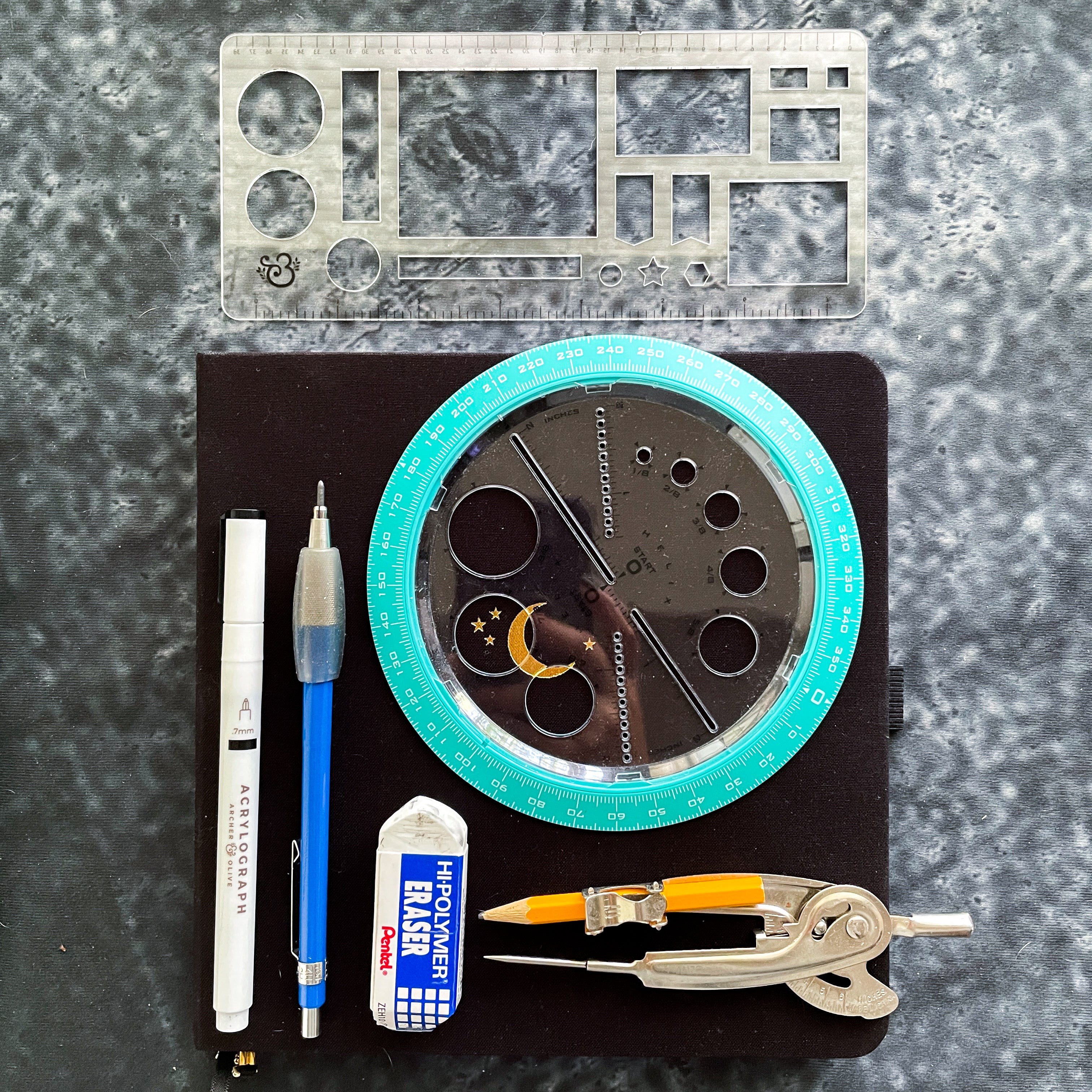Mandalas are beautiful, intricate designs that can be both a creative outlet and a form of meditation. If you’re a beginner intimidated by their complexity, this guide will break down the process into easy-to-follow steps. Whether you want to add a personal touch to your bullet journal, create unique art, or simply unwind, learning how to draw mandalas is a rewarding skill.
Materials You’ll Need
To start your mandala journey, gather these essential tools:
- Journal: An Archer and Olive journal is ideal because of its high-quality paper that can handle various art mediums without bleed-through. A square journal can be particularly helpful for centering your mandala.
- Pens: A black Acrylograph pen is great for bold lines, while a thinner fineliner (0.1 or 0.3) will be perfect for adding intricate details. A white Acrylograph can be used for highlights and accents.
- Pencil: A regular pencil is needed for sketching guidelines, which are essential for creating symmetrical designs.
- Eraser: To clean up any stray pencil marks and perfect your design.
- Compass or Circle Ruler: These tools will help you create accurate concentric circles, forming the foundation of your mandala.
- Ruler: A ruler will be helpful for drawing straight lines and dividing your circle into sections.
Creating Guidelines for Symmetry
Symmetry is key to a visually appealing mandala. While freehand mandalas can be beautiful, guidelines will help you achieve a more balanced and professional look. Here’s how to set them up:
- Find the Center: Draw a vertical and horizontal line intersecting at the center of your page. This point will be the heart of your mandala.
- Concentric Circles: Using your compass or circle ruler, draw several concentric circles around the center point. Vary the distances between the circles to create visual interest and accommodate different pattern sizes. The circles are the framework for your designs.
Pattern Ideas to Spark Your Creativity
The possibilities for mandala patterns are endless. Geometric shapes are a great starting point, but don’t be afraid to experiment!
- Look for Inspiration: Examine existing mandalas, nature, and everyday objects for pattern ideas. Flowers, leaves, geometric patterns in architecture, and even snowflakes can provide inspiration.
- Create a Pattern Dictionary: Keep a sketchbook or digital document of patterns you like. This will be a valuable resource when you’re feeling stuck or need a quick idea.
- Start Simple: Begin with basic shapes like circles, triangles, squares, and dots. As you gain confidence, you can incorporate more complex designs like petals, swirls, and geometric abstractions.
Filling In Your Rings: Step-by-Step
There’s no right or wrong way to fill in your mandala rings, but here’s a helpful approach:
- Work from the Center Outwards: Start filling in the innermost circle and gradually move outwards, one ring at a time.
- Experiment with Patterns: You can use a single pattern for an entire ring or mix it up with different designs. Larger patterns can span multiple rings for a more dynamic effect.
- Consider Line Thickness: Remember that the closer your lines are together, the darker that section of your mandala will appear. Use this technique to create contrast and highlight specific areas. Areas with tightly packed patterns tend to visually pop more.
Adding Details for Depth and Dimension
Adding fine details can elevate your mandala and create a more intricate and visually appealing design.
- Use a Thinner Pen: Switch to a fineliner pen (0.1 or 0.3) to add delicate details and create contrast.
- Fill Empty Spaces: Break up large empty areas with smaller lines, dots, or additional patterns.
- Add Black Accents: Coloring in certain sections with black can create dramatic contrast and emphasize specific shapes.
- Maintain Symmetry: Whatever details you add to one section, mirror them around the mandala to maintain balance. Don’t worry about being perfectly precise; slight variations can add character to your design.
Embracing the Process
Creating a mandala is as much about the journey as it is about the final product. The repetitive nature of drawing mandalas can be incredibly calming and meditative. Let go of perfectionism and enjoy the process of creating something beautiful. If you are hitting an art block, this is a great way to reset your brain.
Share Your Creations
Once you’ve created your mandala, share it with the world! Tag @archerandolive, @archerandolive.community, and use the hashtags #AOShare and #archerandolive on social media so the community can admire your work.
